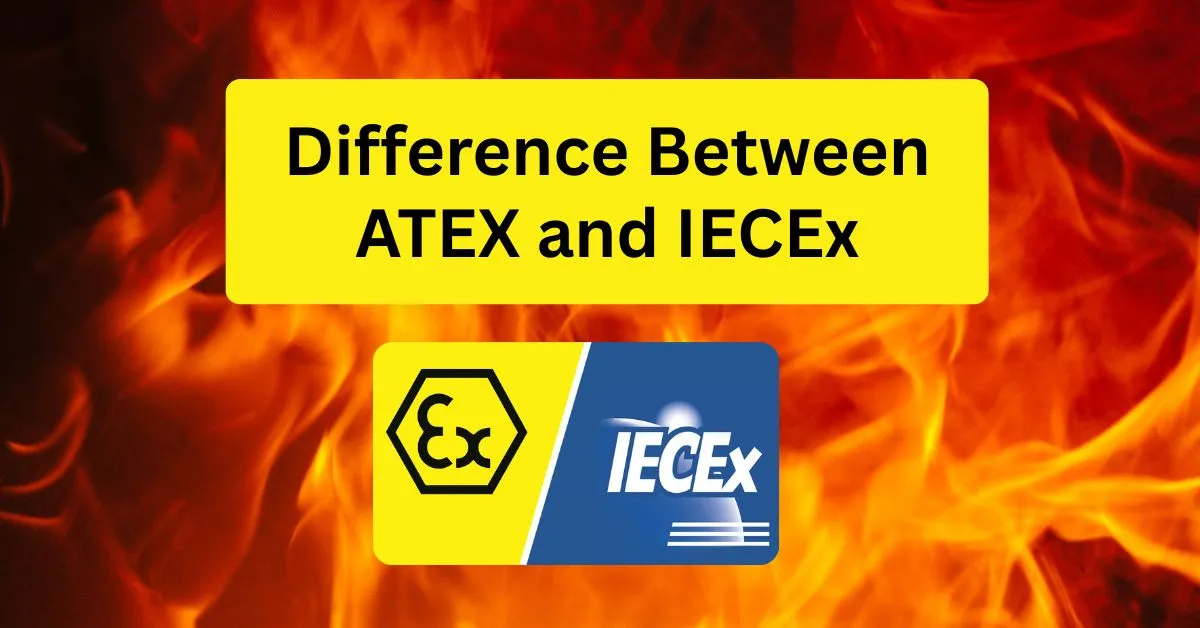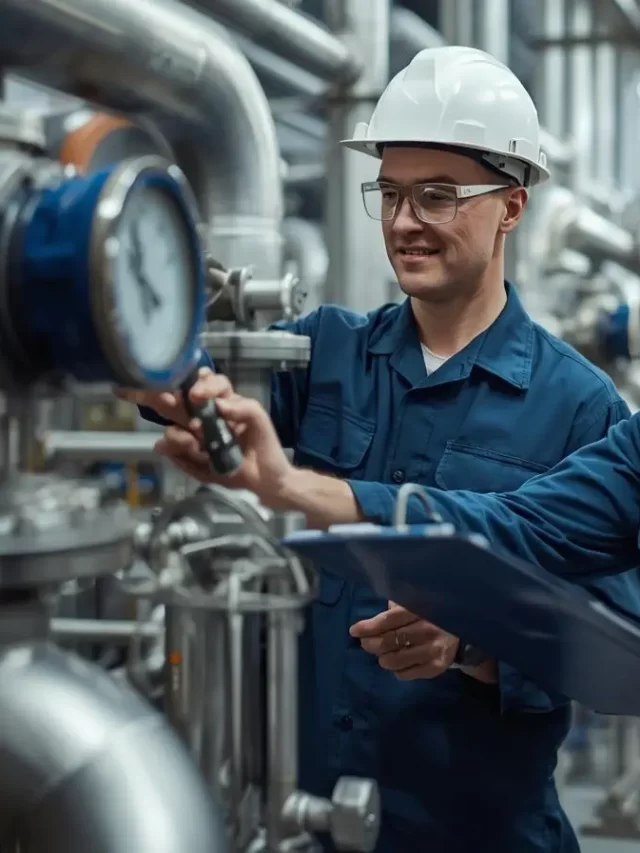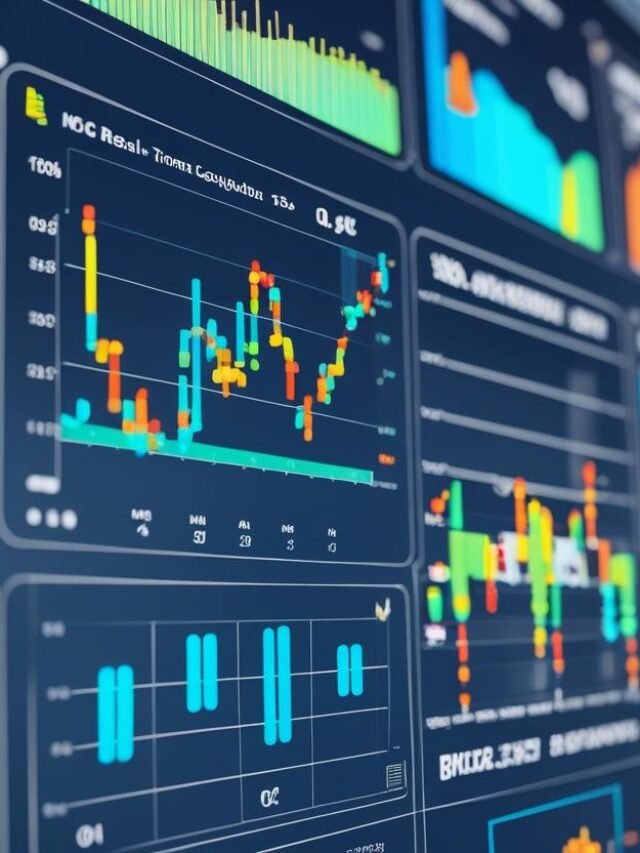Table of Contents
ToggleWhat is difference between ATEX and IECEx?
When gases, vapors or dust that can burn get mixed with air in the right amount, they can form an explosive atmosphere. If any spark or heat source appears in this situation, an explosion can happen.
Explosions can cause serious injuries, loss of life and major damage to equipment and buildings. They can also create long-term financial and environmental problems.
That is why it is extremely important to take the right steps to control explosive atmospheres and make sure that no ignition source is present.
To help industries stay safe and aware of these risks, different safety rules, standards, and guidelines have been created. These ensure that both manufacturers and operators follow the best safety practices.
Two major systems used globally to prove equipment safety in hazardous areas are the ATEX directive and the IECEx scheme.
They help manufacturers show that their equipment meets the required safety levels to prevent explosions.
What is the difference between ATEX and IECEx certification?
Even though both ATEX and IECEx follow the same international IEC 60079 standards, there are some important differences.
ATEX is mainly used in the European Union and is a key part of identifying and classifying hazardous areas there.
IECEx is a global certification system that is completely based on international standards and can be used in countries all around the world.
Because of this, many industries often compare ATEX and IECEx to decide which certification is right for their equipment and applications.
Please refer IECEx Informative Guide here.
What is the ATEX Certification?
The term ATEX comes from the French words “ATmosphères EXplosibles,” which refers to equipment that is designed to be used in places where explosive atmospheres may occur.
ATEX certification is mandatory in Europe, and it covers everything from how the equipment is made to how it is installed and used in hazardous areas.
ATEX rules are divided into two main directives:
A. Directive 1999/92/EC – The ATEX “User” Directive
This directive focuses on workers’ safety in areas where explosions could happen. It requires companies to:
1) Do a complete assessment of explosion risks
2) Classify hazardous areas into different Zones and label their entry points
3) Ensure safe working conditions
4) Properly guide visitors and subcontractors
5) Choose safe and suitable equipment for explosive environments
B) Directive 2014/34/EU – The ATEX “Equipment” Directive
This part is meant for manufacturers. It sets rules for any equipment that may be used in explosive atmospheres on the surface, underground, or on offshore installations.
This directive includes:
1) Any equipment that might create an ignition source and cause an explosion
2) Protective systems used to prevent or reduce explosion risks
Manufacturers must ensure their products meet strict health and safety requirements. This usually means the product must be tested and certified by a notified body.
What is ATEX Marking?
Equipment that is certified under ATEX is marked with the “Ex” symbol, along with other details such as:
1) The type of protection method
2) The temperature class
These markings help users easily identify whether the equipment is safe for use in explosive environments.
ATEX certification is mainly used in the European Union
What is IECEx Certification?
The IECEx system (International Electrotechnical Commission for Explosive Atmospheres) is recognized globally and is used in many countries outside the EU.
What IECEx Does?
IECEx is an international certification scheme that requires equipment to fully meet IEC safety standards.
Special IECEx-approved testing labs check products designed for use in explosive atmospheres. If the product meets all safety requirements, an IECEx Certificate of Conformity is issued.
Why IECEx Certification Matters?
An IECEx certificate:
1) Gives direct access to many global markets
2) Shows that the equipment follows international safety standards
3) Supports local certification processes in different countries
ATEX vs IECEx: Technical Similarities
The technical rules and safety standards used in both ATEX and IECEx are almost the same.
Because of this, many manufacturers now choose to have their products certified under both ATEX and IECEx, making them suitable for use in both Europe and the rest of the world.
Levels of Certification
Both ATEX and IECEx have certification levels that depend on where the equipment will be used in a hazardous area.
Hazardous zones are classified based on how likely it is for an explosive atmosphere to be present.
Once the zone is identified, the equipment is given a protection rating:
- ATEX uses Equipment Protection Levels (EPLs)
- IECEx uses Equipment Protection Methods (EPMs)
These ratings show how well the equipment can prevent ignition and keep the area safe.
ATEX Levels
For Gas Hazards
- EPL Ga – Very high protection
- EPL Gb – High protection
- EPL Gc – Enhanced (moderate) protection
For Dust Hazards
- EPL Da – Very high protection
- EPL Db – High protection
- EPL Dc – Enhanced protection
For Mining
- EPL Ma, Mb – High or very high protection for mining environments
IECEx Levels
For Gas Hazards
- Ex ia, ib, ic – Different levels of intrinsic safety
For Dust Hazards
- Ex ta, tb, tc – Different levels of dust protection
For Mining
- Ex Ma, Mb – Protection levels for mining equipment
Understanding Zones
Both ATEX and IECEx classify hazardous areas into zones, depending on how often and how long an explosive atmosphere (gas, vapor, or dust) is likely to be present.
For gases and vapors, the zone numbers are almost the same in both systems.
For dusts, the zones are also similar, but there are small differences between ATEX and IECEx.
Please refer table below.
Gases or Vapors
| Zone | ATEX | IECEx |
|---|---|---|
| 0 | A place where an explosive atmosphere is present all the time | An explosive atmosphere is present continuously or for long periods |
| 1 | A place where an explosive atmosphere may appear from time to time | An explosive atmosphere is likely during normal operation |
| 2 | A place where an explosive atmosphere is unlikely, and if it does happen, it is brief | An explosive atmosphere is not expected in normal operation, but if it occurs, it will be short-lasting |
Dust
| Zone | ATEX | IECEx |
|---|---|---|
| 20 | A place where an explosive dust atmosphere is present all the time | Explosive dust atmosphere is present continuously or for long periods |
| 21 | A place where an explosive dust atmosphere may occur occasionally | Explosive dust atmosphere is likely in normal operation |
| 22 | A place where an explosive dust atmosphere is unlikely, and if present, it is short | Explosive dust atmosphere is not likely in normal use, but if it happens, it will be brief |
What we learn today?
ATEX, IECEx, and similar standards are essential for keeping people and equipment safe in explosive environments.
By understanding the rules, regional differences, and certification levels, companies can choose the right protection and stay compliant.
Following both ATEX and IECEx not only improves safety but also helps manufacturers access global markets and ensures their equipment works safely across different regions.
I hope you like above blog. There is no cost associated in sharing the article in your social media. Thanks for Reading !! Happy Learning










